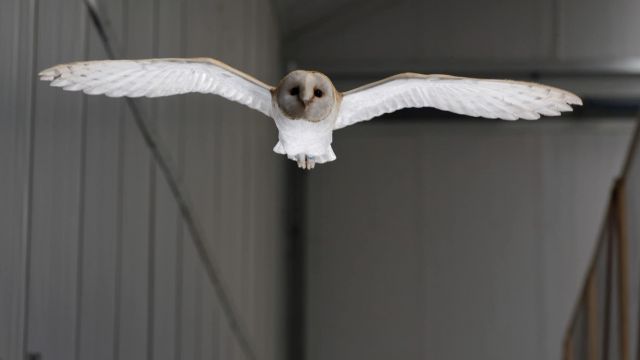The University of Bristol and the Royal Veterinary College have discovered that large and powerful wing muscles have a stabilising function that allows birds to cope with strong and sudden wind changes.
The researchers say the findings, published in the journal Proceedings Of The Royal Society B, could pave the way for developing small-scale aircraft with enhanced flight performance.
Dr Shane Windsor, the study’s author from the Department of Aerospace Engineering at the University of Bristol, said: “We know birds cope amazingly well in conditions which challenge engineered air vehicles of a similar size but until now we didn’t understand the mechanics behind it.”
The researchers conducted a series of experiments on a barn owl called Lily who was filmed while being exposed to a range of fan-generated vertical gusts.
As a trained falconry bird and a veteran of many nature documentaries, Lily was not fazed by the lights and cameras, the researchers said.
Lily flew through the bumpy gusts and consistently kept her head and torso amazingly stable over the trajectory, as if she was flying with a suspension system
Professor Richard Bomphrey, of the Royal Veterinary College, also an author on the study, said: “We began with very gentle gusts in case Lily had any difficulties but soon found that – even at the highest gust speeds we could make – Lily was unperturbed.”
Analysis showed Lily was able to withstand sudden gusts by pivoting her wings about the shoulder, leaving the head and body largely unaffected.
Lead author Dr Jorn Cheney from the Royal Veterinary College said: “Lily flew through the bumpy gusts and consistently kept her head and torso amazingly stable over the trajectory as if she was flying with a suspension system.
“When we analysed it, what surprised us was that the suspension-system effect wasn’t just due to aerodynamics but benefited from the mass in her wings.
“For reference, each of our upper limbs is about 5% of our body weight. For a bird it’s about double and they use that mass to effectively absorb the gust.”
Dr Jonathan Stevenson from the University of Bristol, who is also one of the authors on the study, said: “Perhaps most exciting is the discovery that the very fastest part of the suspension effect is built into the mechanics of the wings so birds don’t actively need to do anything for it to work.
“The mechanics are very elegant.”







